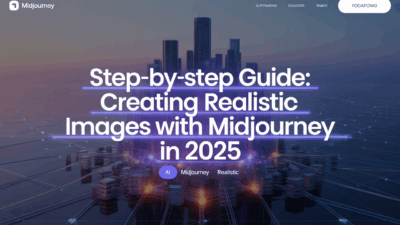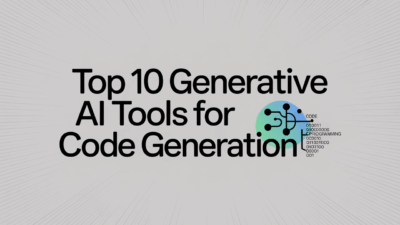In today’s fast-paced digital world, the ability to create interactive chatbots is becoming increasingly valuable across various industries. Surprisingly, you no longer need advanced coding skills to build these intelligent conversational agents. With the rise of no-code platforms and user-friendly tools, anyone can now develop a chatbot tailored to their specific needs.
The Rise of No-Code Chatbot Development
The barrier to entry for creating chatbots has significantly lowered thanks to platforms like Denser.ai, which offer no-code solutions that allow users to create intelligent chatbots capable of learning and adapting . These platforms empower individuals without programming backgrounds to harness the power of generative AI, enabling them to build chatbots that can engage users in meaningful conversations.
Understanding Generative AI in Chatbots
Generative AI chatbots are designed to create new content by predicting the most statistically likely word to appear next in a conversation . This capability allows chatbots to generate responses that are not only relevant but also contextually appropriate, enhancing the user experience. By leveraging generative AI, chatbots can provide personalized interactions that mimic human conversation, making them ideal for customer service, sales, and support roles.
Getting Started with Chatbot Creation
If you’re interested in building your own chatbot without any coding experience, here’s a simple guide to get you started:
-
Choose the Right Platform: Select a no-code platform that suits your needs. Platforms like Juji claim to be easier to use than making PowerPoint presentations and 100 times faster than other tools . Research different options to find one that aligns with your goals.
-
Define Your Chatbot’s Purpose: Clearly outline what you want your chatbot to achieve. Whether it’s answering frequently asked questions or guiding users through a process, having a clear purpose will help shape the chatbot’s design and functionality.
-
Design Conversational Flows: Map out the possible interactions users might have with your chatbot. Consider different scenarios and how the chatbot should respond. This step is crucial for ensuring smooth and effective conversations.
-
Train Your Chatbot: Use the platform’s features to train your chatbot. Many platforms allow you to input sample dialogues or use machine learning to improve over time. As noted in a blog post about training a personal chatbot, this process can be done without coding, allowing for a personalized touch .
-
Test and Refine: Once your chatbot is built, test it thoroughly to ensure it performs as expected. Gather feedback from users and make necessary adjustments to enhance its performance.
-
Deploy and Monitor: After testing, deploy your chatbot on your website or application. Continuously monitor its performance and update it as needed to keep up with changing user needs and preferences.
Enhancing Your Chatbot with Advanced Features
As you become more comfortable with chatbot development, you may wish to explore more advanced features. For instance, understanding prompt engineering can greatly enhance your chatbot’s capabilities. Prompt engineering involves crafting inputs that elicit the best possible outputs from an AI model, a skill highlighted in a comprehensive guide on Generative AI and Prompt Engineering . This knowledge can help you fine-tune your chatbot’s responses to be more accurate and engaging.
Building a chatbot without coding skills is not only feasible but also an exciting opportunity to leverage technology in innovative ways. With the right tools and a bit of creativity, you can create an interactive chatbot that adds value to your business or project. Embrace the future of communication and start building your chatbot today!



